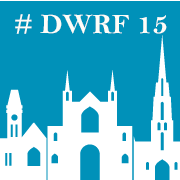https://booksellersnz.wordpress.com/2014/05/11/the-childrens-room-storytime-train-to-port-chalmers/
After a 5am start ('can we go on the train yet?') and a muttered It’s-not-light-yet-go-back-to-sleep, Esme and I moved around the house with a quiet determination NOT to miss the Children’s Room Story-time Train to Port Chalmers this morning. As we arrived at one-of-the-most-photographed-railway-stations-in-the-world (who measures that, and how? But yes, it is gorgeous), passengers were treated to trainside performances of song and dance from Kat Anna Fiddle and furry costumed characters. As both the crowd and anticipation grew, this risky but rewarding event got under way with a call of ‘all aboard!’ and a collective squeal from the under 7’s. Children over this age smiled lots. As did parents, it must be noted. As one myself, it was just so nice to have an event for younger folk – an acknowledgement that writers and readers are of all ages, not just us older bookish types.

Why risky? Well, an event that has approximately 100 excited children on a train (and then in a small community library) can be described as many things, and risky is certainly one of them. Whilst wonderfully contained on the train, walking from where the train stopped to the library entailed rigorous traffic control and constant reminders to the children that, yes, cars do travel on the road at Port Chalmers. It was great that organisers had put these safety measures in place.
Additionally, any attempt to organise post-train adrenalized children in a small space could easily be described as herding cats, and those in charge really rose to the challenge, with the youngest children downstairs and the older upstairs, and a swap halfway through the time to share the wonderful authors with all ages. Diana Noonan and Robyn Belton were pitch perfect for the littlies, and Kyle Mewburn’s maniacal manner created a wonderfully controlled chaos in his young audience. Mewburn has a glint in his eye and a way with words.

And rewarding? Definitely. Whatever your age, trains are cool. Books are cool. So trains and books together? Ultra cool. And Esme was pretty impressed with the snack pack and gift from the amazing people at UBS and the end of the experience. Thanks Dunedin Writers and Readers festival for including all ages in this celebration of the written word. It’s just so cool to spread that love of words.
Event reviewed by Lara Liesbeth on behalf of Booksellers NZ









